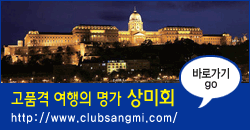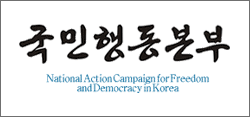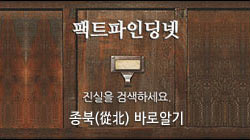(부강한 선진국의 뿌리와 기독교 문명의 발자취)
1) 한국인들은 물론 세계인들이 가장 많이 여행(旅行)하고 싶은 나라들은 어딜까?
2) 도대체 그곳에 무엇이 있기에 그토록 가보고 싶어 하고 실제로 가는 것일까?
3) 과연 그곳에는 인종(人種), 민족(民族), 사상(思想)을 초월하는 보편적 가치의 볼거리가 있는 걸까?
4) 그렇다면 그것들은 무엇일까?
5) 그들의 공통점은 무엇일까?
세계 여행을 하면 할수록 이런 의문(疑問)은 계속 증폭됐다. 하긴 이런저런 궁금증과 호기심(好奇心)이 없었다면 여행에 대한 魅力(매력)이나 熱情(열정)은 이미 식어버렸을 것이다.
답: ⓵북미, 유럽, 호주, 뉴질랜드 ⓶세계사적 유물(遺物)과 유적(遺蹟) ⓷그렇다 ⓸첨단과학 문명도시와 문화. 건축,미술,음악,조각,문학 등 ⓹기독교 문화권
자료출처:유엔개발기구, 세계은행, 이코노미스트지, 포춘지, 사회진보지수, 국가브랜드 인덱스, 국제투명기구 등 여러 국제기구와 매체(媒體) 등.
자료1)문화 부문에 대한 호감도 순위는 1위가 프랑스, 이어서 이탈리아, 영국, 독일, 미국, 스페인, 러시아, 일본, 중국, 브라질, 호주, 캐나다, 스웨덴, 네덜란드, 오스트리아(15위)였다.
자료2)국민에 대한 호감도에선 캐나다 사람들이 1등이었다. 이어서 호주, 이탈리아, 스웨덴, 스위스-영국, 독일, 일본, 스페인, 뉴질랜드, 프랑스, 네덜란드, 미국, 노르웨이-스코틀랜드(공동 14위)였다.
자료3)관광하고 싶은 국가 순위론 이탈리아가 1등이고 이어서 프랑스, 스페인, 영국, 호주-미국, 캐나다, 일본, 스위스, 독일, 이집트, 스코틀랜드, 브라질, 스웨덴, 오스트리아였다.
자료4)투자 및 이민을 가고 싶은 나라 1위는 캐나다, 이어서 영국, 미국, 스위스, 독일, 프랑스, 호주, 스웨덴, 이탈리아, 일본, 네덜란드, 스페인, 덴마크, 노르웨이, 뉴질랜드(15위) 순위였다.
자료5)종합 국가브랜드 순위를 보면 1등이 독일로서 67.4점이었다. 2등이 프랑스인데 67.3점이었다. 3위는 영국 66.8점. 이어서 캐나다, 일본, 이탈리아, 미국, 스위스, 호주, 스웨덴(10위), 스페인, 네덜란드, 노르웨이, 오스트리아, 덴마크, 스코틀랜드, 뉴질랜드, 핀란드, 아일랜드, 벨기에(20위), 브라질, 러시아, 아이슬란드, 싱가포르, 아르헨티나, 멕시코, 인도, 헝가리-중국(공동 28위), 폴란드, 체코-이집트, 대한민국(33위 등),
<*상위권에 오른 나라들(中,日 제외)의 뿌리는 기독교 문화를 기초로 한다.>
大韓民國을 포함한 세계사의 주역들에게는 공통점이 있다. 거의 다 기독교(Christianity)문화와 밀접한 관련이 있다(참고: 國父 이승만은 독실한 기독교인이자 철저한 反共主義者). 기독교의 모체(母體)는 헤브라이즘(Hellenism)에 있다고 볼 때 그렇다. 모세(Moses)가 등장하면서 이집트 왕국과 갈등을 갖게 되고, 사울(Saul)이 헤브라이 왕국을 세우고 3대 솔로몬(Solomon) 왕이 죽자 헤브라이 왕국은 이스라엘과 유다로 분열된다. 1948년 5월 14일 팔레스타인에 이스라엘 국호(國號)를 걸고 건국(建國)을 선포할 때까지 2500여 년 동안 세계사에 크고 작은 영향을 끼쳤다. 로마제국의 기독교 박해(迫害)로 엄청난 규모의 카타콤(Catacom)을 비롯해 종교문화를 심화시켰다. 마침내 기독교를 국교(國敎)로 받아들임으로써 국가 경영의 효율성에 기여했다. 십자군 전쟁과 신·구교(新·舊敎)의 갈등과 전쟁 그리고 게르만계 바이킹과 노르만이 기독교를 받아들임으로써 본격적인 다방면의 과학 문명 발달에 기여했다.
가령, 마르코 폴로와 콜럼부스의 역할, 종교개혁과 르네상스 그리고 시민혁명과 산업혁명, 전 세계에 파견되어 교육, 의료 등을 지원한 수도회(修道會)와 선교사들, 소련을 필두로 하는 공산주의 확산을 막고, 인종주의 나치즘과 파시즘 그리고 군국주의가 주도한 세계 제1차, 2차 대전과 태평양 전쟁을 종식했다. 덕택에 大韓民國을 포함 100여 개국은 식민지배로부터 해방되고 독립됐다. 지속적으로 인류(人類) 보편적 가치인 사랑, 자유, 인권, 복지 등의 발전에 앞장서고 있다. 이들 국가의 대부분이 미국을 중심으로 한 기독교 국가들이다.
이들 국가는 자유민주주의 국가들이다. 복지 선진국들이다. 기독교 국가들로서 세계 문화유산을 가장 많이 산출(産出) 보유하고 있다. 전 세계의 관광 자원들 가운데 기독교 문화의 산물(産物)인 성당 등 건축물과 미술, 조각, 음악, 연극 그리고 문학을 빼버리면 상위(上位) 문화의 개념인 관광 상품과 자원이 크게 위축되어 관광산업 자체가 저질화(低質化)될 것이다.
세계역사를 주도한 민족과 국가들은 이동(移動)을 많이 하는 민족이다. 기독교 문화와 깊은 관련이 있다. 개방적이고 진취적이다. 전쟁을 두려워하지 않으며 명예를 존중하고 결과에 승복한다. 모험심과 탐험심이 많고 여행을 많이 한다. 관념보다 실천과 경험을 중시하는 실용주의자다. 논리적이고 합리적이다. 토론문화에 익숙하다. 계약과 신용을 매우 중시한다. 청빈사상(淸貧思想)보다 청부사상(淸富思想)을 토대로 한 자본주의 산실(産室)이다. 사례(事例)는 다음과 같다.
고대(古代) 에게문명, 크레타문명, 미케네문명, 페니키아와 카르타고...바빌로니아, 이집트, 페르시아, 마케도니아, 그리스, 로마, 게르만과 바이킹과 노르만, 포르투갈, 스페인, 오스트리아, 네덜란드, 영국, 프랑스, 미국 등이다. 산업혁명과 시민혁명의 후발주자(後發走者)로 등장해 뒤늦게 근대화에 성공한 독일, 이태리, 일본, 러시아 등이 그렇다. 마지막 주자로 근대화에 뛰어들어 경제 강국을 이루고 자유민주주의 국가를 완성한 나라가 있다. 근.현대사에 신기록을 남겼다. 전 세계가 놀란 역사적 사건이며 기적이다. 그 주인공은 ‘大韓民國’이다.
*성경(聖經)에도 여행에 관한 언급이 있다.
“여행을 많이 한 사람은 아는 것이 많고, 경험이 많은 사람은 지혜롭게 말한다. 경험이 없는 사람은 아는 것이 적고, 여행을 많이 한 사람은 모든 일에 능숙하다. 나는 여행하면서 많은 것을 보았다. 하지만 내가 배운 것을 말로 다 표현할 수가 없다. 나는 여러 번 죽을 고비를 당했지만, 내가 쌓은 경험의 덕으로 살아났다. 당신의 삶은 하나님의 깊은 의식을 가지고 여행해야 하는 여행입니다.”-집회서 34장 9절-13, 베드로서1:18-21
PS. 세계 여행을 통해 배운 것 중 가장 소중한 걸 하나 들라면 기독교의 실체라고 말하고 싶습니다. 기독교는 세계 종교로서 그 발자취를 문화와 문명의 이름으로 전세계에 남겼다는 것. 덕택에, 우리는 세계를 여행하면서 기독교 성지, 역사 유적지, 박물관, 미술관, 등을 통해 그 흔적을 생생하게 볼 수 있었습니다. 부부 배낭여행을 하면서 전 세계에 산재하는 선진국들이 대부분 기독교 문명권이라는 느낌을 강하게 받았습니다. 현대 문명의 뿌리도 그 열매도 역시 기독교에 있음을 곳곳의 현장에서 직접 보고 듣고 배웠습니다. 물론 우리나라 대한민국도 예외가 아닙니다. 메리 크리스마스.
*감사합니다.
---------------------------------------------------------------
People met on my backpacking 168 – Merry Christmas
- Footsteps of Christian civilization -
(The roots of rich developed countries and the footsteps of Christian civilization)
1) Which countries do Koreans as well as people around the world want to travel the most?
2) What in the world is there that they want to go so much and are they actually going?
3) Is there really something to see in universal value that transcends race and thought?
4) If so, what are they?
5) What do they have in common?
The more I travel around the world, the more suspicious I am. Well, if I don't have any questions or curiosity, I won't have any charm or passion for traveling.
Answer:
⓵North America, Europe, Australia, New Zealand.
⓶World historical relics and ruins.
⓷That's right.
⓸High-tech science civilized cities and cultures. Architecture, art, music, sculpture, literature, etc.
⓹Christian culture.
Data: UN Development Organization, World Bank, Economist magazine, Fortune, Social Progress Index, National Brand Index, International Transparent Organization, etc.
Data 1) Rankings of favorability for the cultural sector; No. 1 is France, Italy, Britain, Germany, the United States, Spain, Russia, Japan, China, Brazil, Australia, Canada, Sweden, the Netherlands, Austria (15th).
Data 2) Rankings of likes for the people; Canadians 1. Australia, Italy, Sweden, Switzerland-Britain, Germany, Japan, Spain, New Zealand, France, Netherlands, the United States, Norway-Scotland (joint 14th).
Data 3) The ranking of countries people want to tour; Italy 1, France, Spain, Britain, Australia = United States, Canada, Japan, Switzerland, Germany, Egypt, Scotland, Brazil, Sweden, Austria.
Data 4) Countries where people want to invest and immigrate; No. 1 is Canada, Britain, the United States, Switzerland, Germany, France, Australia, Sweden, Italy, Japan, the Netherlands, Spain, Denmark, Norway, and New Zealand (15th).
Data 5) Overall national brand ranking; Germany ranked first with 67.4 points. France came in second, with 67.3 points. Third place is the UK with 66.8 points, followed by Canada, Japan, Italy, the United States, Switzerland, Australia, Sweden (10th), Spain, Netherlands, Norway, Austria, Denmark, Scotland, New Zealand, Finland, Ireland, Russia, Iceland, Singapore, Argentina, Mexico, India, Hungary-China (joint 28th), Poland, Czech-Egypt, South Korea (33rd).
<
The leaders of world history, including the Republic of Korea, have something in common. Almost all are closely related to Christianity culture (note: Syngman Rhee is a devout Christian and thorough anti-mainist). This is the case when the roots of Christianity are in Hellenism. With the advent of Moses, there was a conflict with the Egyptian kingdom. Saul established the Hebrai Kingdom, and the third King Solomon died. Then the Kingdom of Hebrai was divided into Israel and Judah. It had a major and small impact on world history for over 2,500 years until Palestine was declared a founding nation in the name of Israel on May 14, 1948. The Roman Empire's persecution of Christianity deepened religious culture, including Catacom, on a tremendous scale. Finally, Rome contributed to the efficiency of state management by accepting Christianity as the state religion. The Crusades, the conflicts between the Protestant and the Old religions, and the war continued. Finally, the Germanic Vikings and Normans accepted Christianity, contributing to the development of scientific civilization in earnest.
For example, the roles of Marco Polo and Columbus, the Reformation and Renaissance, the Civil Revolution, and the Industrial Revolution. They were monks and missionaries dispatched around the world to support education and medical care. They prevented the spread of communism led by the Soviet Union and prevented racist Nazism and fascism. And it ended World War I and II, led by militarism and the Pacific War. Thanks to this, more than 100 countries, including the Republic of Korea, were liberated from colonial rule and became independent. They are continuously taking the lead in the development of universal values such as love, freedom, human rights, and welfare. What's important is that most of these countries are Christian countries centered on the United States.
These countries are liberal, democratic countries. They are advanced welfare countries. As Christian countries, they have the most World Heritage Sites. I wonder what would happen if architecture, art, sculpture, music, theater, and literature, such as cathedrals, which are the products of Christian culture, were excluded among tourism resources around the world. If that happens, tourism products and resources, which are the concepts of the upper-level culture, will probably shrink significantly, resulting in a deterioration of the tourism industry itself.
I think the people and countries that led the world's history were people who moved a lot. It is deeply related to Christian culture. They are open and progressive. Also, they are not afraid of war, respect their honor, and accept the results. Also, they are adventurous, exploratory, and travel a lot. They are pragmatists who value practice and experience rather than ideas and are logical and rational. They are very familiar with discussion culture, value contracts, and credit. These are the birthplaces of capitalism based on honest, rich ideas rather than honest poverty. Examples are as follows:
Ancient Aegean civilization, Crete civilization, Mycenae civilization, Phoeniciania, and Carthage... Babylonian, Egypt, Persian, Macedonia, Greece, Rome, Germanic, Viking, Norman, Portugal, Spain, Austria, the Netherlands, Britain, France, and the United States. Germany, Italy, Japan, and Russia, which appeared as latecomers to the industrial revolution and succeeded in modernization late, are the same. As the last runner, there is a country that jumped into modernization, formed an economic powerhouse, and completed a liberal democratic state. They set a new record in modern history. This is a historical event and a miracle that surprised the world. It is the Republic of Korea.
*The Bible also mentions travel.
"Those who have traveled a lot know a lot, and those who have a lot of experience speak wisely. Those who have no experience know little, and those who have traveled a lot are good at everything. I saw a lot of things while traveling. But I can't express everything I learned in words. I was on the verge of dying several times, but I survived thanks to my experience. Your life is a journey that you have to travel with a deep consciousness of God." -34:9-13, As Bed 1:18-21
PS. If I had to pick up one of the most precious things I have learned from traveling around the world, I would say that it is the reality of Christianity. Christianity, as a world religion, has left its footprints around the world in the name of culture and civilization. Thanks to this, we were able to see the traces vividly through Christian holy places, historical sites, museums, art galleries, etc. while traveling around the world. While backpacking for couples, I strongly felt that most of the developed countries scattered around the world were Christian civilizations. I saw, heard, and learned from various sites that the roots and fruits of modern civilization are also in Christianity. Of course, Korea is no exception. Merry Christmas.
Thanks.
.












 bestkorea(회원)
bestkorea(회원)







 트위터
트위터 페이스북
페이스북 미투데이
미투데이 요즘
요즘 네이버
네이버
































